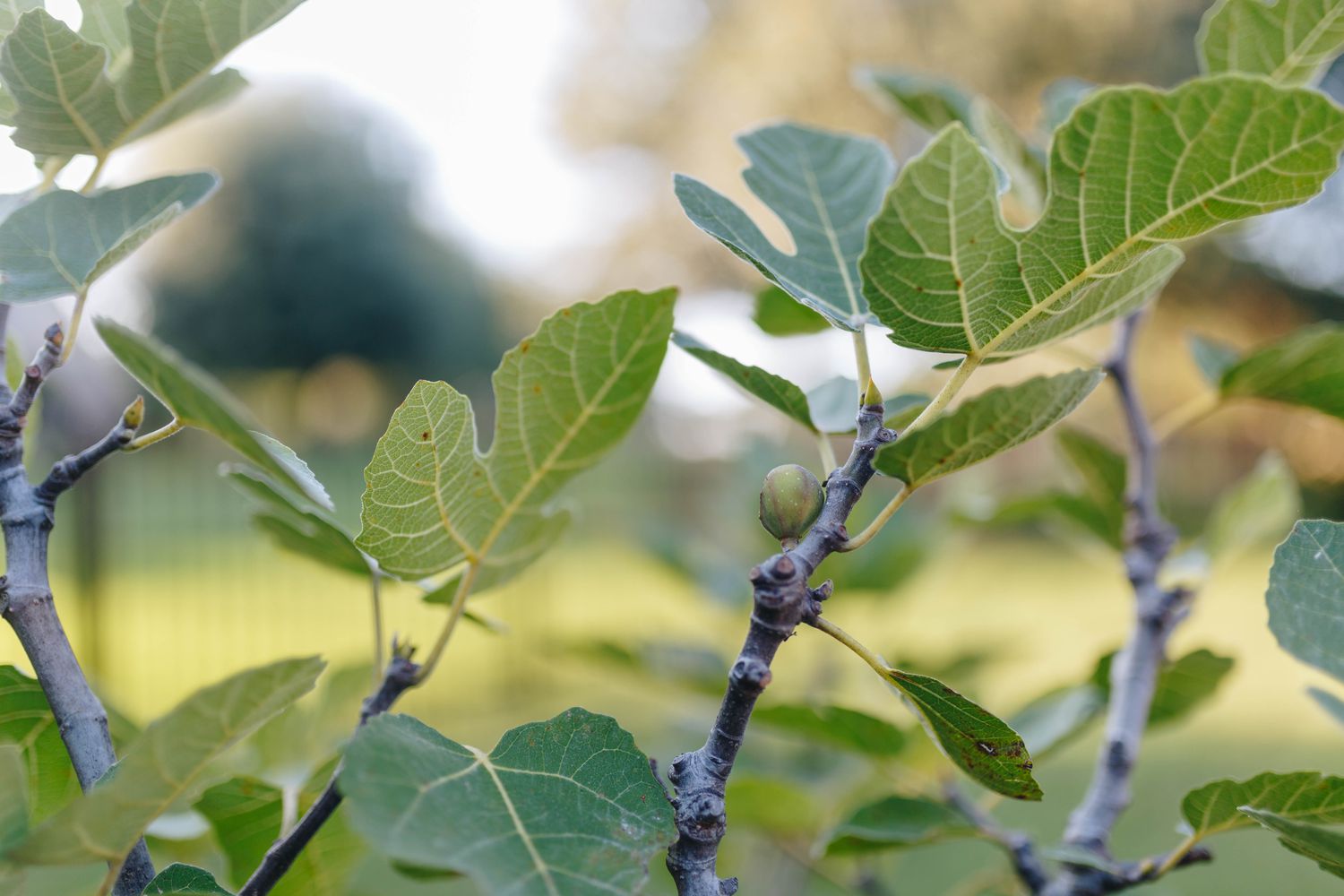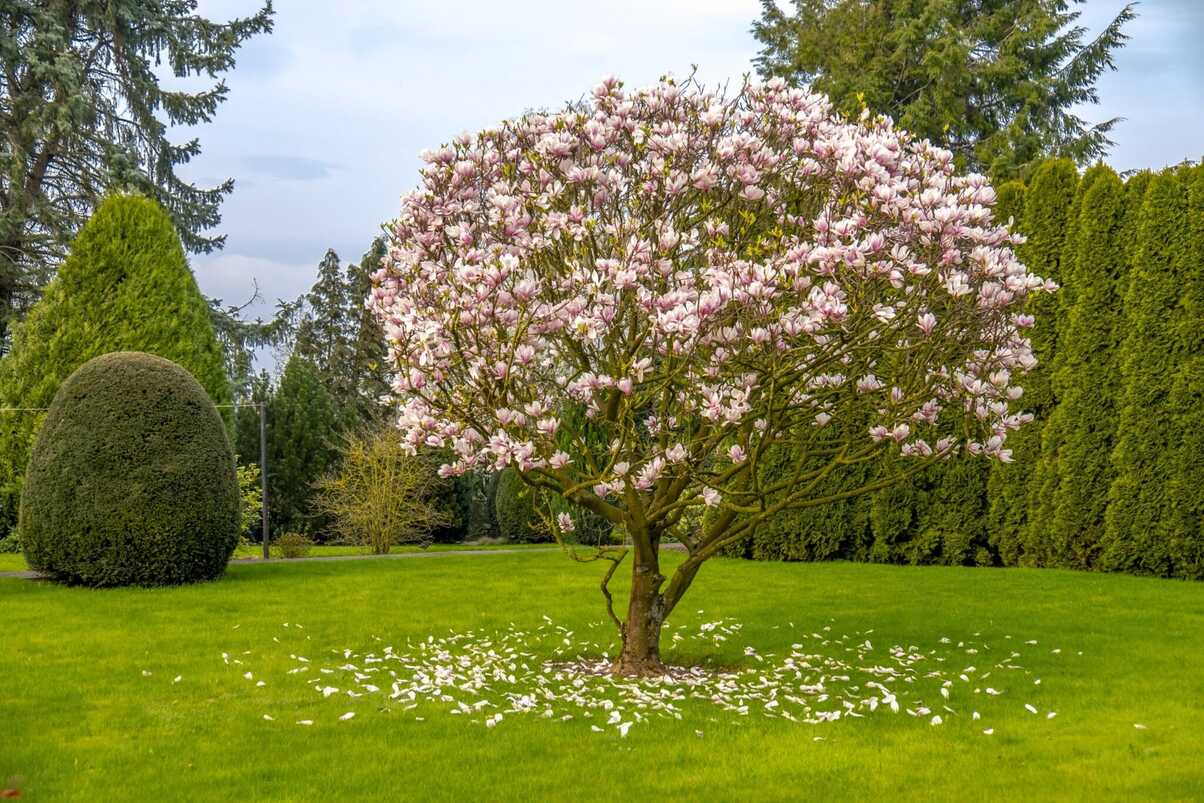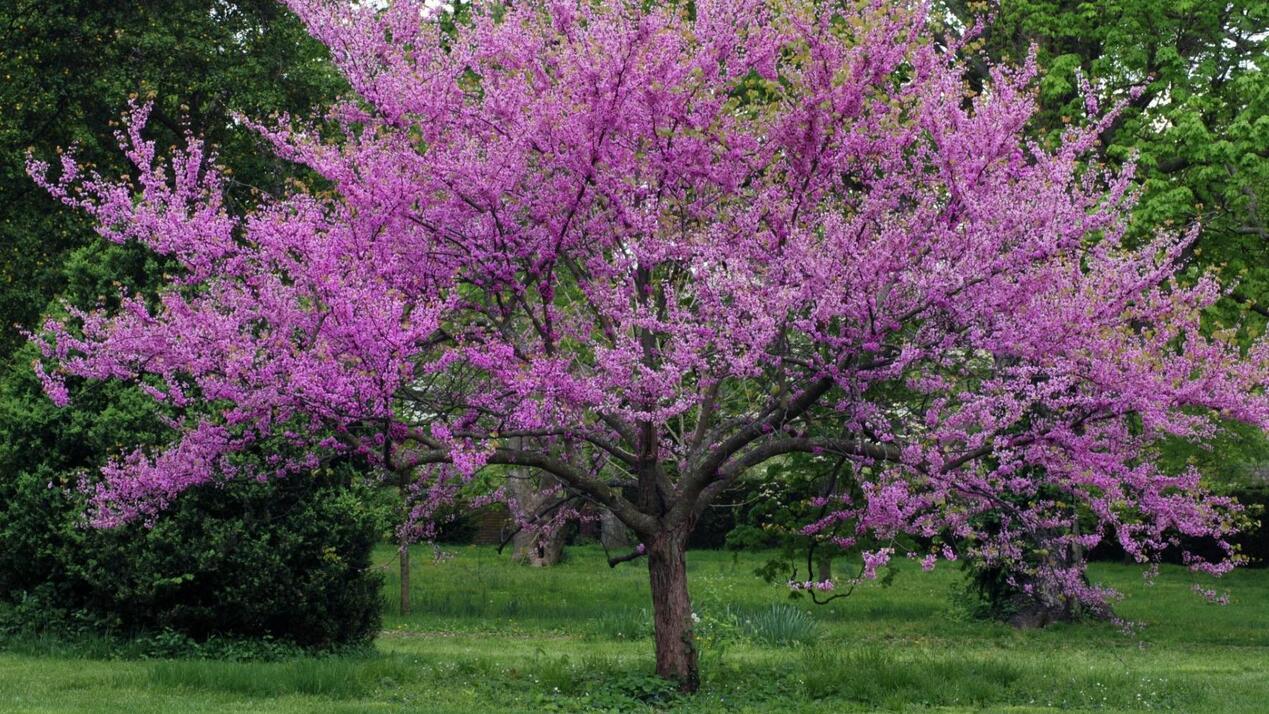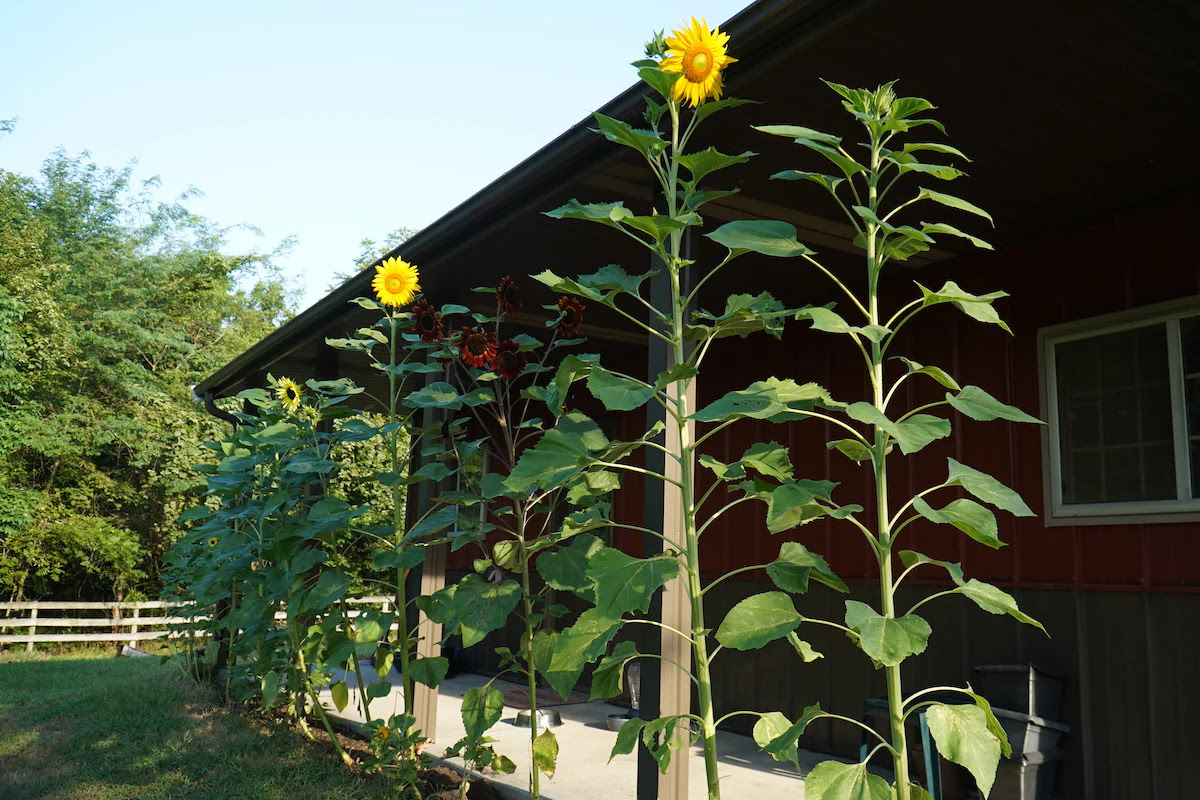Home>Gardening News and Trends>Latest News>How Tall Do Sycamore Trees Grow


Latest News
How Tall Do Sycamore Trees Grow
Modified: January 22, 2024
Discover the latest news on how tall sycamore trees can grow, and learn fascinating facts about these magnificent giants.
(Many of the links in this article redirect to a specific reviewed product. Your purchase of these products through affiliate links helps to generate commission for Chicagolandgardening.com, at no extra cost. Learn more)
Table of Contents
Introduction
Welcome to the world of majestic and towering sycamore trees! If you have ever marveled at the sight of these impressive giants and wondered just how tall they can grow, you’ve come to the right place. In this article, we will explore the incredible height potential of sycamore trees and uncover the factors that contribute to their growth.
Sycamore trees, scientifically known as Platanus occidentalis, are native to North America and are widely cherished for their beauty and shade. They are deciduous trees with large, distinctive leaves and a signature mottled bark that sheds periodically, revealing patches of smooth, pale inner bark beneath.
As avid nature enthusiasts, it’s natural to be curious about the remarkable physical attributes of the plants and trees that surround us. When it comes to sycamore trees, their height is a topic of particular interest due to their characteristic grandeur. Sycamores can tower above other trees in the forest, creating an awe-inspiring spectacle.
Throughout this article, we will delve into the factors that influence the height of sycamore trees, including genetic predisposition, environmental conditions, and available resources. We will also examine the average height of these trees, as well as exceptional specimens that have reached staggering heights. By understanding the significance of sycamore tree height, we can gain a deeper appreciation for these magnificent organisms and the vital role they play in their ecosystems.
Characteristics of Sycamore Trees
Before we dive into the height potential of sycamore trees, let’s take a moment to appreciate their other notable characteristics. Sycamores are known for their size, distinctive appearance, and ability to thrive in various environments.
One of the most striking features of sycamore trees is their size. They are often considered to be one of the largest deciduous trees in North America, capable of reaching impressive heights and widths. Their trunks can grow to be several feet in diameter, providing a sturdy foundation for their towering branches.
Sycamores are easily recognizable by their leaves, which are green and palmate with three to five lobes. During the fall season, these leaves turn vibrant shades of orange, red, and yellow, creating a picturesque display of autumn colors in the landscape.
In addition to their size and foliage, sycamores also possess a distinctive bark that sets them apart from other trees. The outer bark of a mature sycamore tree is recognizable for its peeling and patchy appearance. As the tree grows, the outer bark sheds, revealing patches of smooth, white or pale green inner bark underneath. This characteristic bark pattern is not only aesthetically pleasing but also serves as a protective layer for the tree against harsh weather conditions.
Sycamore trees are remarkably adaptable and can thrive in a wide range of environments. They are commonly found in riparian habitats, along riverbanks, and in areas with moist soil. However, they can also tolerate drier conditions and grow in upland areas with well-drained soil. This versatility allows sycamores to flourish across a diverse range of landscapes.
Overall, the impressive size, distinctive foliage, and adaptable nature of sycamore trees contribute to their allure and make them a cherished feature of many landscapes. Now that we’ve explored their characteristics, let’s dive deeper into the factors that influence their height potential.
Factors Affecting Sycamore Tree Height
The height of a sycamore tree is influenced by a variety of factors, including genetics, environmental conditions, and available resources. Understanding these factors can shed light on why some sycamores reach towering heights, while others remain relatively smaller.
Genetics: The genetic makeup of a sycamore tree plays a significant role in determining its maximum height potential. Just like humans inherit certain traits from their parents, sycamore trees inherit genetic traits that contribute to their growth. Some trees may have genes that promote taller growth, while others may be genetically predisposed to remain shorter. It is important to note that genetic variation exists within sycamore populations, leading to differences in height among individual trees.
Environmental Conditions: The environment in which a sycamore tree grows greatly impacts its height. Sycamores thrive in areas with abundant sunlight and ample water availability. These trees require a sufficient amount of light for photosynthesis, the process by which they convert sunlight into energy. Additionally, access to water is crucial for their growth and development. Sycamores typically grow near rivers, streams, or other water sources, where the moisture in the soil supports their expansion.
Available Resources: The availability of resources such as nutrients and space can also affect the height of sycamore trees. Sycamores require a rich soil composition to obtain the necessary nutrients for growth. They also need ample space for their roots to spread and establish a strong foundation. Competition from other plants and trees for resources can limit a sycamore tree’s growth potential. In crowded environments, where resources are scarce, sycamores may not reach their maximum height.
Competition: Competition among sycamore trees themselves can also impact their height. As these trees grow close together, they vie for resources, including sunlight and water. In densely populated areas, sycamores may compete for space, nutrients, and other essential elements, leading to stunted growth in some individuals.
By understanding these influential factors, we can appreciate the intricacies involved in determining the height of sycamore trees. Now, let’s explore the average height that sycamores typically achieve.
Average Height of Sycamore Trees
The average height of sycamore trees can vary depending on various factors, including geographic location and individual growth conditions. Generally, mature sycamore trees reach heights ranging from 70 to 100 feet (21 to 30 meters). However, exceptional specimens have been known to exceed these average figures.
In regions with favorable growth conditions, sycamore trees can reach the upper end of their height range. Factors such as abundant sunlight, ample water availability, and nutrient-rich soil contribute to their optimal growth. These areas may include riparian zones, where sycamores thrive in the moist soil along riverbanks.
On the other hand, sycamores growing in less ideal conditions may exhibit slower growth and shorter heights. Factors such as limited sunlight, water scarcity, and poor soil quality can hinder their development. In drier regions or areas with less access to water, sycamores may experience stunted growth and have an average height closer to the lower end of the range.
It is important to note that these average height figures serve as general guidelines and can vary from tree to tree. Genetic factors, environmental variations, and available resources all contribute to the unique growth patterns of each individual sycamore tree.
Despite the variability in height, sycamores consistently showcase their impressive stature and contribute to the beauty of landscapes. Now, let’s explore some exceptional sycamore trees that have attained extraordinary heights.
Exceptionally Tall Sycamore Trees
While the average height of sycamore trees falls within a range of 70 to 100 feet, there are notable specimens that have reached exceptional heights, captivating the imagination of nature enthusiasts worldwide. These towering giants exemplify the tremendous growth potential of sycamore trees.
One remarkable sycamore tree, known as the “Champion Sycamore,” resides in Indiana, USA. This magnificent tree stands at a staggering height of 148 feet (45 meters), making it one of the tallest known sycamores in the world. Its remarkable stature attracts visitors from near and far, as they marvel at its grandeur and the awe-inspiring sight it presents.
Another exceptional sycamore tree can be found in Arkansas, USA. This tree, aptly named the “Arkansas Big Tree,” reaches an impressive height of 144 feet (44 meters). This towering giant stands as a testament to the incredible growth potential of sycamores, captivating all who encounter it.
In addition to these exceptional examples, there are numerous other sycamore trees scattered across the globe that have managed to attain remarkable heights. These towering specimens serve as a reminder of the resilience and adaptability of sycamore trees, defying the limitations of their average height range.
Scientists and arborists continue to explore and discover new tall sycamore trees, adding to our understanding of their maximum growth potential. These exceptional specimens highlight the natural wonders that can be found in the world of trees and further fuel our fascination with these majestic organisms.
The significance of exceptionally tall sycamore trees extends beyond their visual appeal. They contribute to the ecosystem by providing shelter, food, and habitats for a variety of organisms. From birds nesting in their branches to insects finding refuge in the bark, these towering giants support a diverse array of wildlife.
As we explore the exceptional heights that sycamore trees can reach, it is important to appreciate their ecological contributions and the role they play in maintaining the delicate balance of our natural world. Now, let’s reflect on the significance of sycamore tree height.
The Significance of Sycamore Tree Height
The height of sycamore trees holds significant ecological and aesthetic value, making it an important aspect to consider when examining their overall significance. Here are several reasons why the height of sycamores plays a vital role:
Ecosystem Function: Tall sycamore trees act as natural landmarks, providing a vertical structure that helps create diverse microhabitats within the ecosystem. Their towering canopies offer shade and shelter, creating a favorable environment for other plant species to thrive beneath them. Additionally, their height allows for increased presence of branches and foliage, providing ample surface area for photosynthesis and carbon dioxide uptake.
Wildlife Habitat: The height of sycamore trees plays a crucial role in providing homes for a variety of wildlife. The towering branches act as roosting and nesting sites for birds, including woodpeckers, owls, and various songbirds. Larger branches also support nests for raptors, such as hawks and eagles. The height of sycamores enables these avian species to find suitable habitats and contributes to the overall biodiversity of the ecosystem.
Shade and Cooling Effect: Sycamores’ impressive height allows them to cast a wide canopy of shade, offering relief from the sun’s rays. This shade contributes to the cooling effect in surrounding areas, creating more comfortable environments for humans, wildlife, and other plants. Sycamore-lined avenues and parks with tall sycamore trees provide a respite from the heat, making them popular destinations for recreation and leisure.
Aesthetics and Landscape Beauty: The towering presence of sycamore trees adds a sense of grandeur and beauty to any landscape. Their height creates a dramatic visual impact, particularly when observed among smaller trees and buildings. The stately appearance of tall sycamores has inspired artists, poets, and photographers throughout history, showcasing their significance as natural landmarks and symbols of strength and resilience.
Cultural and Historical Significance: Sycamore trees have held cultural and historical importance in various societies and civilizations. In some cultures, they are considered sacred or have been used in ceremonies and rituals. Historically, sycamore trees were used for their wood, which was highly valued for its durability and resistance to decay. The height of these trees adds to their allure and historical significance, connecting us to our past and the stories embedded within our cultural heritage.
Understanding the significance of sycamore tree height allows us to appreciate the multifaceted roles they play in our environment, both ecologically and culturally. These majestic giants stand tall as symbols of strength, resilience, and the interconnectedness of all living things.
Now that we have explored the importance of sycamore tree height, let’s conclude our journey through the world of these towering beauties.
Conclusion
Sycamore trees, with their awe-inspiring height and remarkable characteristics, are undoubtedly a remarkable presence in our natural world. From their towering stature to their distinctive leaves and bark, these magnificent trees never fail to captivate us.
Throughout this article, we have explored the factors that contribute to the height of sycamore trees, such as genetics, environmental conditions, and available resources. While the average height of mature sycamores typically falls within a range of 70 to 100 feet, there are exceptional specimens that have reached staggering heights, surpassing even our highest expectations.
These exceptionally tall sycamore trees not only serve as remarkable natural landmarks but also provide essential habitats for wildlife, contribute to ecosystem function, and offer aesthetic beauty to our landscapes. Their towering presence creates shade, cooling effects, and sanctuary for avian species, while also offering a sense of awe and inspiration to all who encounter them.
The significance of sycamore tree height extends beyond its ecological and cultural importance. It symbolizes strength, resilience, and the interconnectedness of all living things. The towering presence of sycamores serves as a reminder of the wonders of nature and the critical role that trees play in sustaining our planet.
As we continue to appreciate and celebrate the magnificence of sycamore trees, may we also recognize the importance of preserving their habitats, allowing these giants of the forest to thrive for generations to come.
So next time you find yourself standing in the presence of a towering sycamore, take a moment to admire its impressive height and reflect on the wonders of the natural world.










